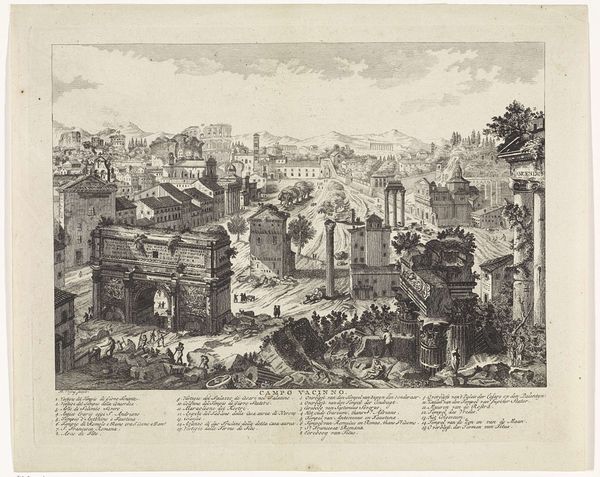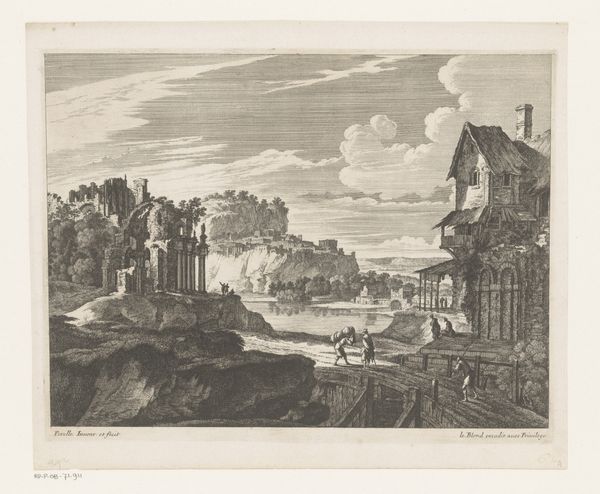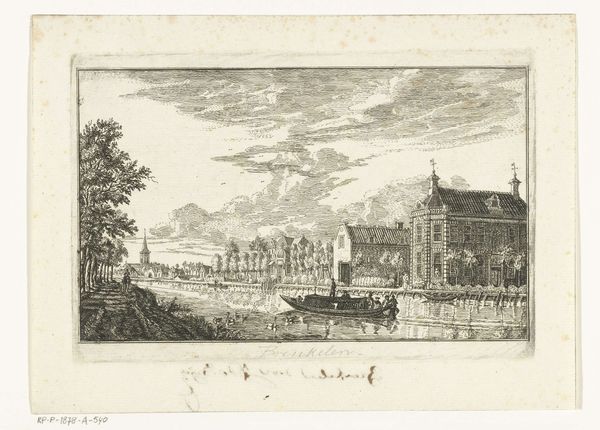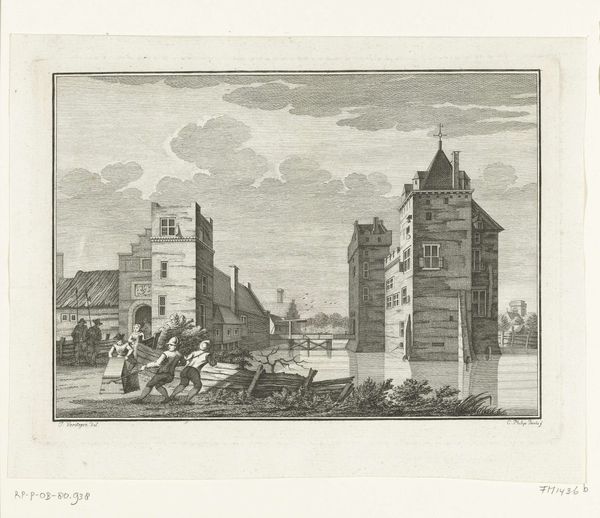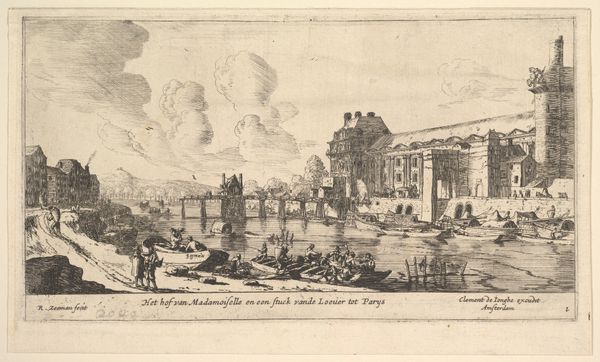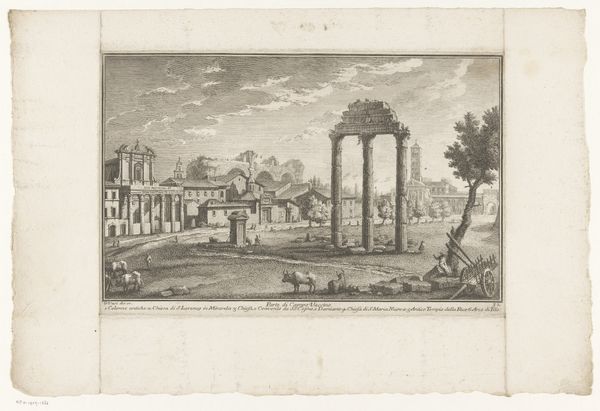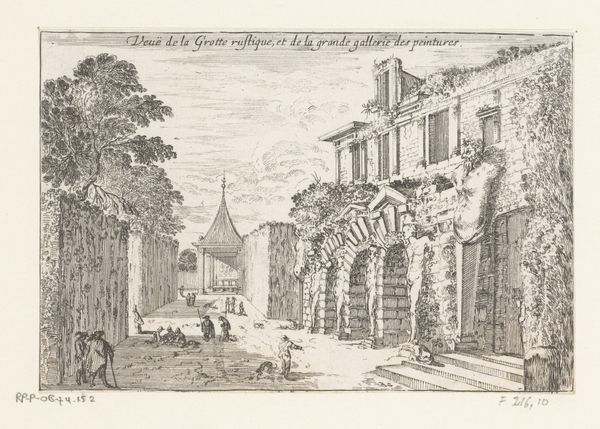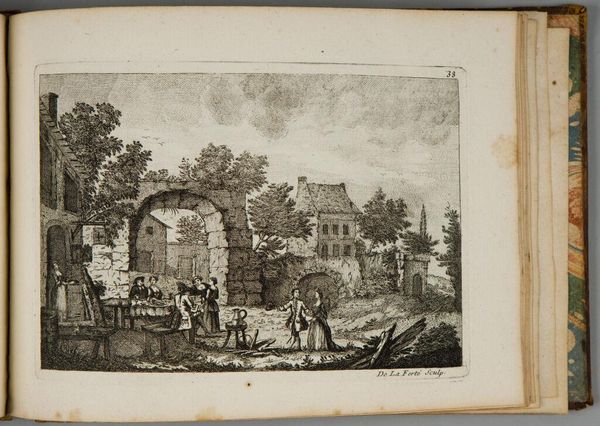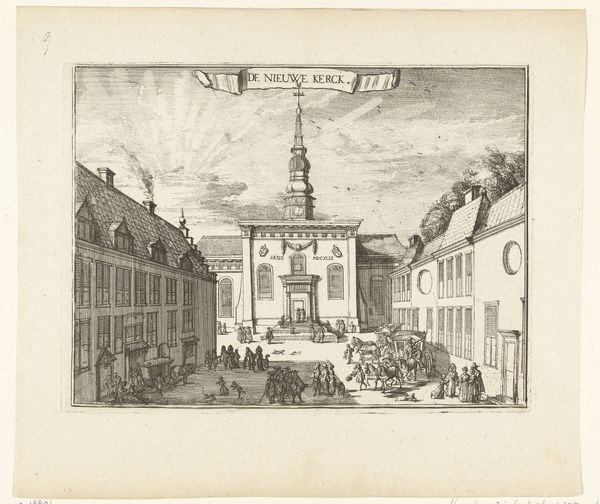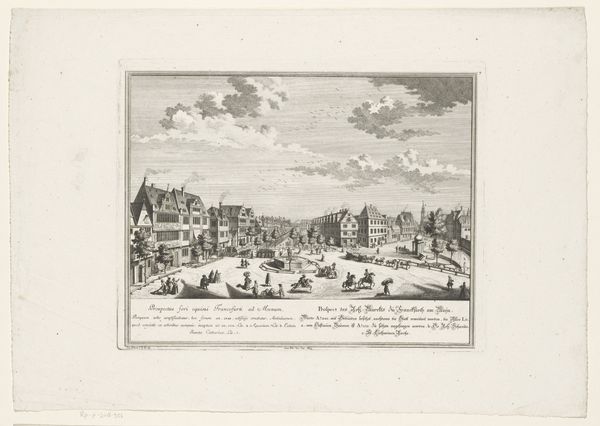
Gebouw voor het vuurwerk ter ere van het bezoek van het Russisch gezantschap aan Amsterdam, augustus 1697 1697 - 1699
0:00
0:00
print, etching
#
baroque
# print
#
etching
#
landscape
#
etching
#
cityscape
#
history-painting
Dimensions: height 378 mm, width 460 mm
Copyright: Rijks Museum: Open Domain
Isaac de Moucheron created this print in 1697 to commemorate the fireworks display honoring the Russian delegation's visit to Amsterdam. The print is made using etching, a process involving coating a metal plate with wax, scratching an image into the wax, and then submerging the plate in acid, which bites into the exposed metal. The fine, precise lines that define the architecture and figures here are characteristic of this technique. But it's not just about the lines, it's about the labor involved in creating this image. The repetitive, meticulous work required to etch the plate mirrors the labor involved in the actual fireworks display. Consider the social context: Amsterdam was a major center for trade, diplomacy, and artisanship. The fireworks themselves represent a display of wealth and power, but also the work of skilled artisans who designed and built the elaborate structure, and the fireworks themselves. De Moucheron's print is a record of that event, but also a celebration of the city's cultural and economic status.
Comments
No comments
Be the first to comment and join the conversation on the ultimate creative platform.
